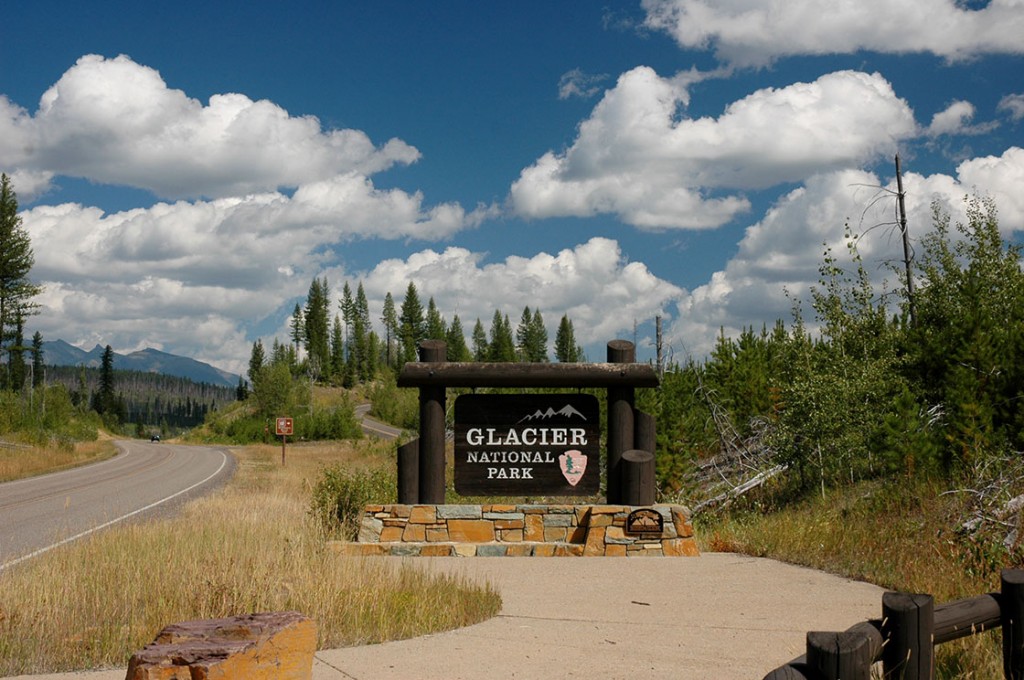 We visited Glacier National Park as part of our three week, camp-and-drive tour in 2012 and spent several days exploring the natural beauty that abounds there. Located in Montana, just south of the Canadian borders of Alberta and British Columbia, the park spans the Continental Divide abutting Waterton Lakes National Park in Canada. These two Parks form the Waterton-Glacier International Peace Park, which was designated as the first International Park in 1902. Ninety three percent of the Park is managed as a wilderness so the air is pure and the waters clear. A seven day vehicle pass will cost you $25 and a yearly pass only $35; individual day passes are also available. Be sure to bring your passport if you want to visit both parks as there is a customs station at the border between the two parks.
We visited Glacier National Park as part of our three week, camp-and-drive tour in 2012 and spent several days exploring the natural beauty that abounds there. Located in Montana, just south of the Canadian borders of Alberta and British Columbia, the park spans the Continental Divide abutting Waterton Lakes National Park in Canada. These two Parks form the Waterton-Glacier International Peace Park, which was designated as the first International Park in 1902. Ninety three percent of the Park is managed as a wilderness so the air is pure and the waters clear. A seven day vehicle pass will cost you $25 and a yearly pass only $35; individual day passes are also available. Be sure to bring your passport if you want to visit both parks as there is a customs station at the border between the two parks.
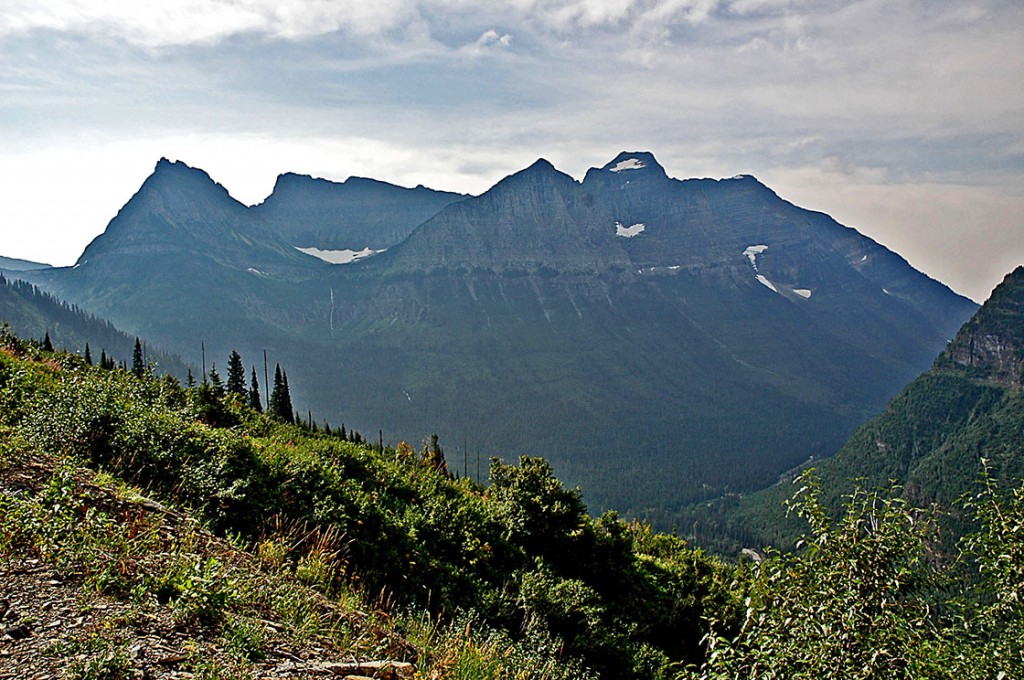 The mountains and lakes in Glacier offer spectacular scenery and lots of recreational activities. Inside the park, there is an elevation change of more than 7,000 feet and the climate varies accordingly, so be prepared. Layered clothing is recommended to accommodate the temperature changes encountered as you tour the park. The park’s symbol is the mountain goat which typifies much of the terrain in the area. There are 13 campgrounds with over 1,000 campsites, more than 700 miles of hiking trails and 130 named lakes. Depending on your interests, you’ll also find 62 species of mammals, 280 species of birds, 23 species of fish, and 1,132 plant species of which 30 are specific to the park. That gives you a lot of things you can plan to do. Note! Dogs are not allowed on the trails, overnight backpacking requires a permit, and there are some limitations for bicycles. Check these out at www.nps.gov/glac or on the web.
The mountains and lakes in Glacier offer spectacular scenery and lots of recreational activities. Inside the park, there is an elevation change of more than 7,000 feet and the climate varies accordingly, so be prepared. Layered clothing is recommended to accommodate the temperature changes encountered as you tour the park. The park’s symbol is the mountain goat which typifies much of the terrain in the area. There are 13 campgrounds with over 1,000 campsites, more than 700 miles of hiking trails and 130 named lakes. Depending on your interests, you’ll also find 62 species of mammals, 280 species of birds, 23 species of fish, and 1,132 plant species of which 30 are specific to the park. That gives you a lot of things you can plan to do. Note! Dogs are not allowed on the trails, overnight backpacking requires a permit, and there are some limitations for bicycles. Check these out at www.nps.gov/glac or on the web.
The park also features ranger guided bird walks, flower walks, nature walks, and evening programs. These are all great activities for the kids. An astronomy program is another highlight most people enjoy. It’s offered just after dark at the St. Mary and Apgar Visitor Centers. There are commercial boat tours on several of the lakes, and guided bus tours, too. Fishing is popular and requires no special permits other than a state license. However, there are a few specific park regulations you have to adhere to, and if you’re going to take your boat there are some special rules you also need to check on before your trip.
 During this whirlwind trip, Pam and I spent four nights camping and three days exploring the park so our time there was limited. This summer our focus was primarily on the local flora and we weren’t disappointed. We entered the park through the west entrance and camped at the Fish Creek Campground on the shore of Lake McDonald. This spot was scenic and well maintained. The restrooms were clean and hot showers were available on site. Since we were near the entrance, gas and food was close by. That was handy, and it would be especially useful to you if you plan to spend several days in the park.
During this whirlwind trip, Pam and I spent four nights camping and three days exploring the park so our time there was limited. This summer our focus was primarily on the local flora and we weren’t disappointed. We entered the park through the west entrance and camped at the Fish Creek Campground on the shore of Lake McDonald. This spot was scenic and well maintained. The restrooms were clean and hot showers were available on site. Since we were near the entrance, gas and food was close by. That was handy, and it would be especially useful to you if you plan to spend several days in the park.
We went the tourist route on our first full day and drove the 50 mile long very scenic Going-To-The-Sun Highway to the top of Logan Pass at 6,646 feet of elevation. We arrived about 10 am and the small parking lot was already full. We were lucky though and nailed a space someone was just vacating. I recommend that you arrive no later than 9 am if you take this drive and want to park at the top, or even earlier if it’s a weekend. If you’re coming later take the free shuttle service from the Visitors Center. Food is available at the lodge there so you have the option of not packing breakfast or lunch. There are several trails of varying distances that branch out over the mountain from the parking lot and you can pick the one that best suits your needs. Remember, you’re at a pretty high altitude so select your activities accordingly. 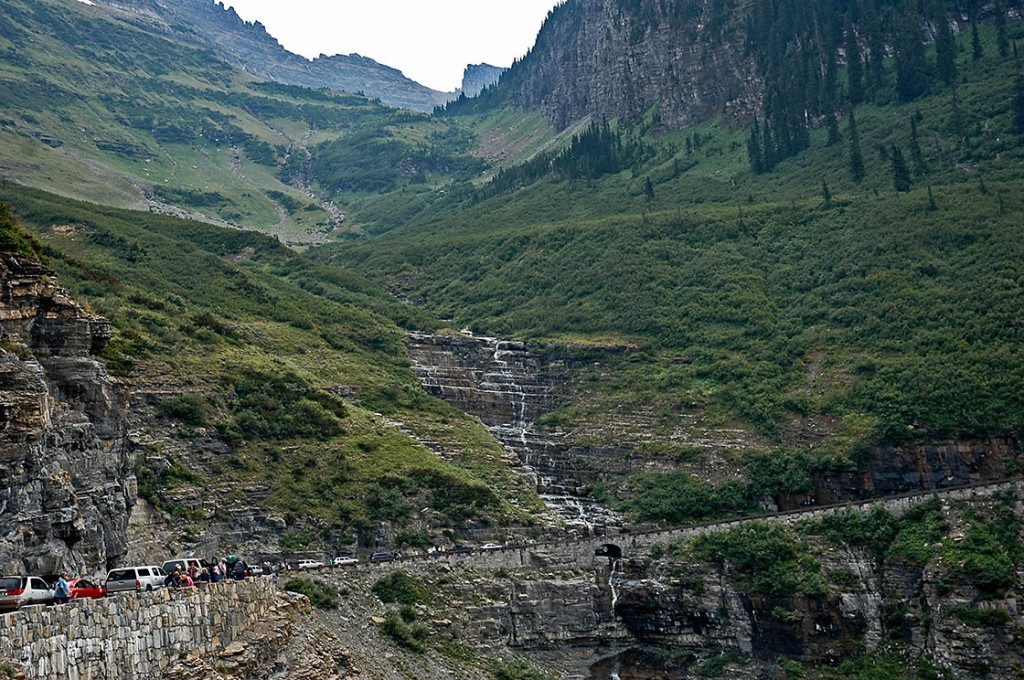 This was some of the best scenery we found in the park, and we found the best flower selection, too. The drive up along the narrow two-way road hugs the mountain with steep drop-offs and can be intimidating for those afraid of heights. It was busy, too. We had half-hour traffic delays for road construction activities both coming and going, but those were actually enjoyable as they gave us some very nice photo opportunities. The Jackson Glacier overlook is a worthwhile stop along the route but don’t expect to see a lot of glacier ice. The glaciers have almost all disappeared, but the evidence of their past activity is still apparent. All in all, this was a great day and I strongly recommend this tour to everyone who visits the park.
This was some of the best scenery we found in the park, and we found the best flower selection, too. The drive up along the narrow two-way road hugs the mountain with steep drop-offs and can be intimidating for those afraid of heights. It was busy, too. We had half-hour traffic delays for road construction activities both coming and going, but those were actually enjoyable as they gave us some very nice photo opportunities. The Jackson Glacier overlook is a worthwhile stop along the route but don’t expect to see a lot of glacier ice. The glaciers have almost all disappeared, but the evidence of their past activity is still apparent. All in all, this was a great day and I strongly recommend this tour to everyone who visits the park.
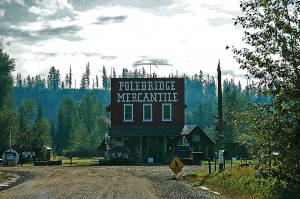 On our second day we opted for a more out-of-the-way day trip and we drove north to the little community of Polebridge. That’s a wide spot in the road about 45 minutes from where we were camped. Inside the rustic general store there’s a small café that had some of the best cinnamon rolls we’d ever tasted. It’s a must stop if you go this way.
On our second day we opted for a more out-of-the-way day trip and we drove north to the little community of Polebridge. That’s a wide spot in the road about 45 minutes from where we were camped. Inside the rustic general store there’s a small café that had some of the best cinnamon rolls we’d ever tasted. It’s a must stop if you go this way. 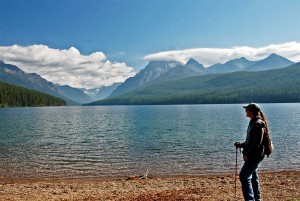
There are several lakes accessible on this side of the park and we decide to visit Bowman Lake. We hiked a lovely lakeside trail there and picked some huckleberries for snacks. The botany was okay, and we had another good day.
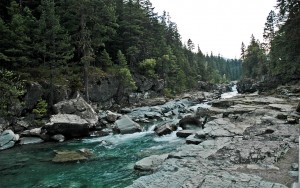 A little trail weary, we spent our third day walking a couple of the many short trails along the road around Lake McDonald. The scenery was great, the flowers okay, and none of the trails too strenuous. Pam liked having lunch out, I liked taking pictures around McDonald Falls, and we both enjoyed an early happy hour at the campsite.
A little trail weary, we spent our third day walking a couple of the many short trails along the road around Lake McDonald. The scenery was great, the flowers okay, and none of the trails too strenuous. Pam liked having lunch out, I liked taking pictures around McDonald Falls, and we both enjoyed an early happy hour at the campsite.
This was a lovely stopover on our three-park trip. The geysers and animals at Yellowstone, and the spectacular wildflower displays at Mount Rainer, bookended Glacier’s wonderful mountain scenery. We’ll go back again, and next time I’ll take my fishing gear. We recommend this mountain wonderland as a great place to visit should you get the chance. For additional information, two good sources are the Glacier Institute (http://www.glacierinstitute.org/), which offers online classes and information about glaciers; and the Automobile Club (AAA) for driving maps and tips.
